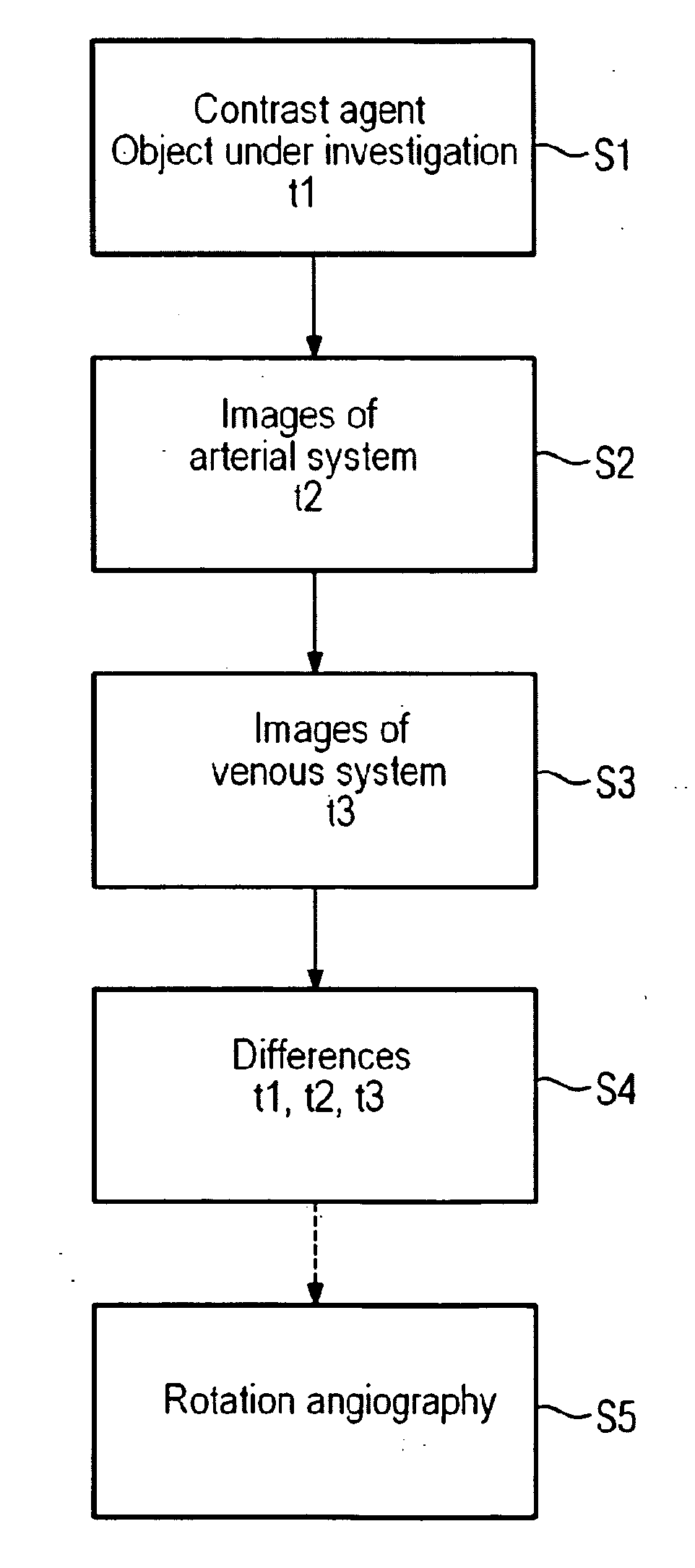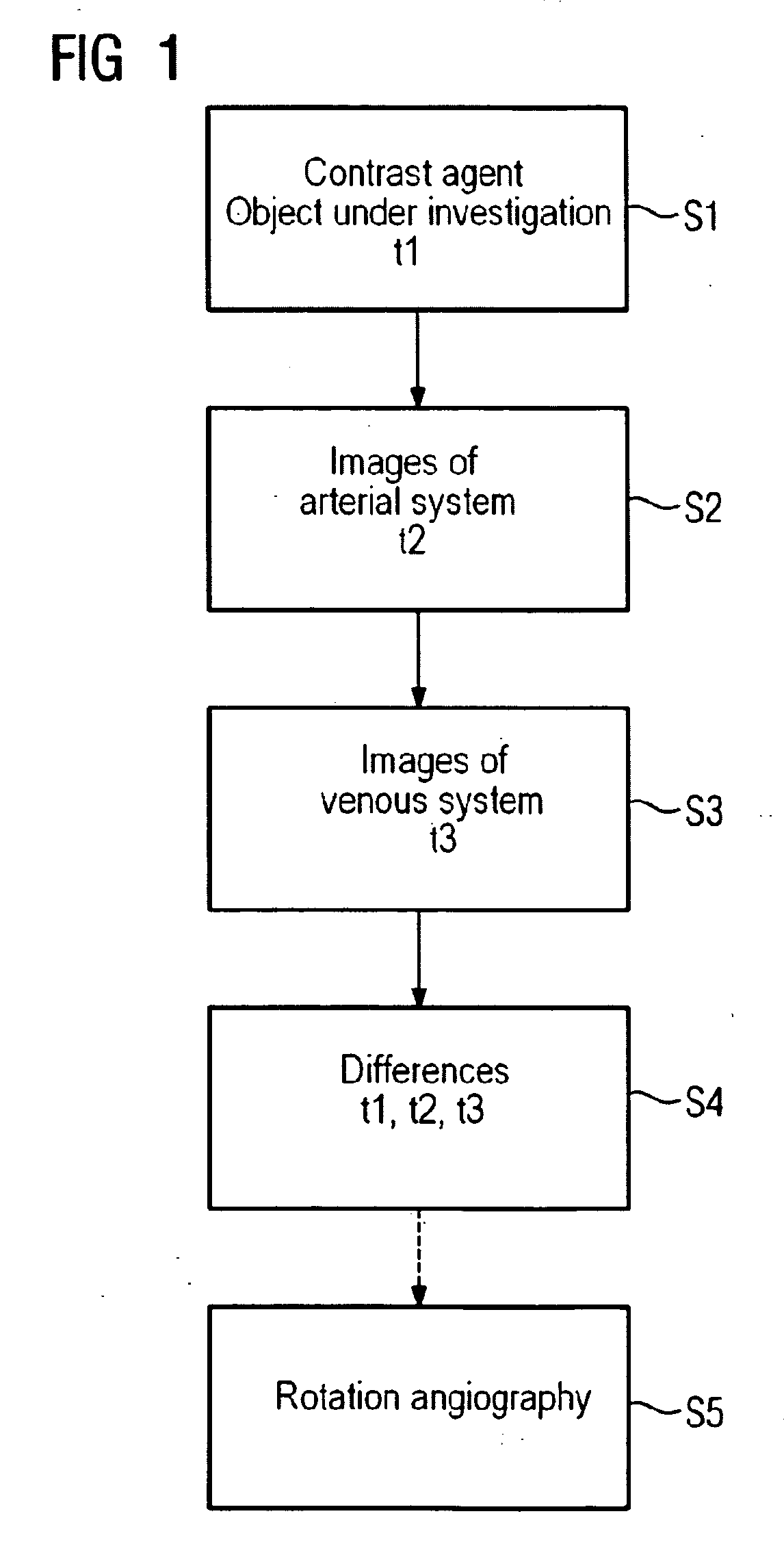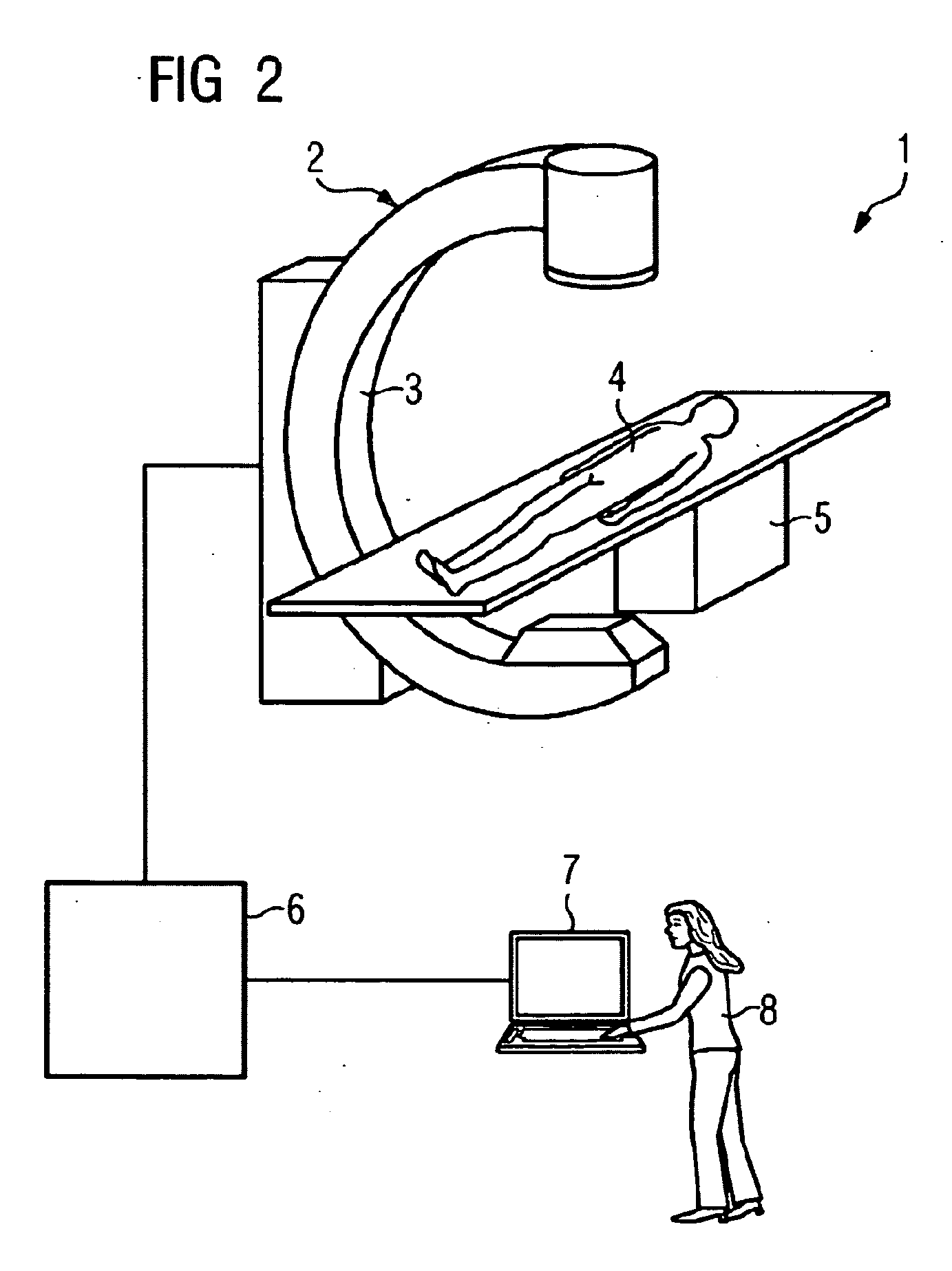Method for determining the dispersion behavior of a contrast agent bolus
a contrast agent and dispersion behavior technology, applied in the field of dispersion behavior determination of contrast agent bolus, can solve the problems of difficult evaluation of recorded three-dimensional images, unsatisfactory results can be produced, etc., and achieve the effect of being ready to evalua
- Summary
- Abstract
- Description
- Claims
- Application Information
AI Technical Summary
Benefits of technology
Problems solved by technology
Method used
Image
Examples
Embodiment Construction
[0039]FIG. 1 shows a flow diagram of a method according to the invention. Here, in order to determine the dispersion behavior of a contrast agent bolus in the blood vessel system, contrast agent is first introduced into same. This takes place at time t1 with the aid of a suitable injector.
[0040] Next, in step S2, preparatory images are produced as test images which show at least a part of the vascular system of the object under investigation in order to reveal the time curve of the uptake of the contrast agent bolus in the arterial vascular system. From the influence of the contrast agent on the recorded images through discoloration and the like, a time t2 for recording a rotational angiography image of an arterial phase is determined, said time being specified by the uptake in the arterial vascular system. If appropriate, test images of different arterial phases can be produced, for example of an early arterial and a late arterial phase.
[0041] Preparatory images are also produced...
PUM
 Login to View More
Login to View More Abstract
Description
Claims
Application Information
 Login to View More
Login to View More - R&D
- Intellectual Property
- Life Sciences
- Materials
- Tech Scout
- Unparalleled Data Quality
- Higher Quality Content
- 60% Fewer Hallucinations
Browse by: Latest US Patents, China's latest patents, Technical Efficacy Thesaurus, Application Domain, Technology Topic, Popular Technical Reports.
© 2025 PatSnap. All rights reserved.Legal|Privacy policy|Modern Slavery Act Transparency Statement|Sitemap|About US| Contact US: help@patsnap.com



